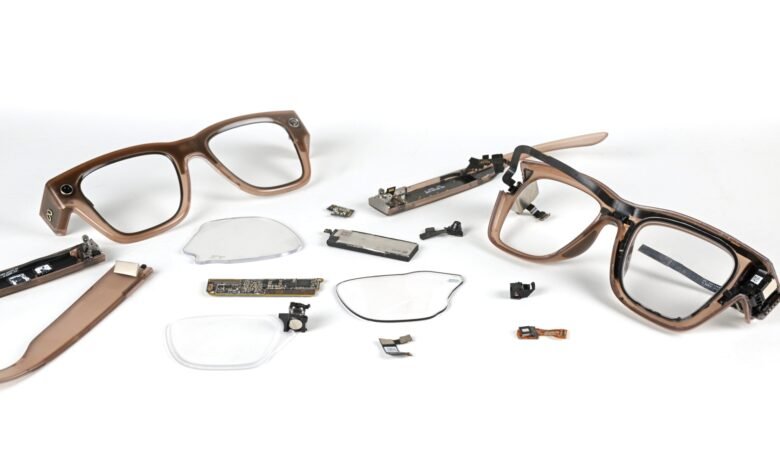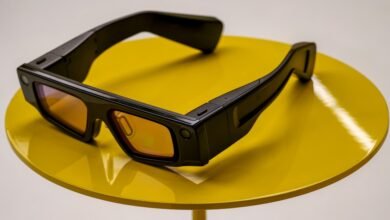Inside Meta’s Ray-Ban Smart Glasses: The Waveguide Tech Explained

▼ Summary
– iFixit conducted a teardown of Meta’s Ray-Ban smart glasses, revealing their internal components and repairability.
– The glasses use geometric waveguide technology from Lumus and Schott for the floating display, offering better optical efficiency and less light leakage.
– Key internal parts include a 960 mWh battery, PCBs, and a lens with a liquid crystal on silicon (LCoS) projector that reflects images to the eye.
– Repairability is limited, as spare parts are hard to find beyond the battery, and the glasses have a low overall repairability score.
– Despite the advanced technology, the glasses are considered to have a dorky appearance and may be viewed negatively by some people.
When the team at iFixit recently dismantled Meta’s Ray-Ban smart glasses, they uncovered the sophisticated waveguide technology responsible for the device’s floating display effect. This detailed exploration reveals how advanced optics bring augmented reality directly into the wearer’s field of vision. A video documenting the teardown process accompanies the analysis, offering a visual guide to the intricate internal components.
The glasses demonstrate a degree of repairability, as applying heat allows the arms to be carefully separated. Inside, technicians located a 960 mWh battery alongside several printed circuit boards. However, sourcing replacement parts for most components other than the battery presents a significant challenge. The front frame houses the antenna system and a specialized lens on the right side. This lens collaborates with a liquid crystal on silicon projector to bounce images toward the user’s eye.
Although LCoS projection technology isn’t new, Google Glass employed it years ago, the real innovation lies in the glass itself. Meta’s glasses utilize a geometric reflective waveguide manufactured by Schott, based on technology developed by Lumus specifically for augmented reality applications. This approach moves beyond traditional diffractive waveguides, promising superior optical efficiency and minimizing unwanted light leakage both into and out of the waveguide structure.
Despite the impressive engineering, the overall repairability assessment remains quite low. Potential users must also consider the social implications, including the persistent stereotype of looking somewhat awkward and the potential perception of being intrusive that sometimes accompanies wearable camera technology.
(Source: Hack A Day)





